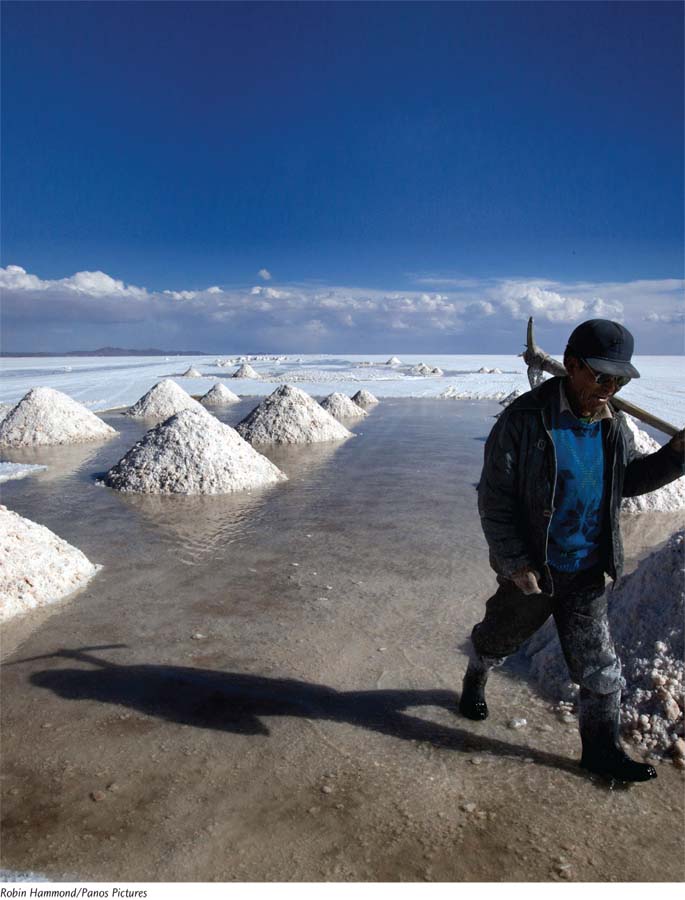Chapter Introduction
258
chapter 8
Earth Systems

259
Module 24 Mineral Resources and Geology
Module 25 Weathering and Soil Science
Are Hybrid Electric Vehicles as Environmentally Friendly as We Think?
Many people in the environmental science community believe that hybrid electric vehicles (HEV) and all-
Although HEV and all-
Although HEV and all-
In addition to the scarcity of metals needed to make HEV and all-
A typical Toyota Prius HEV uses approximately 1 kg (2.2 pounds) of neodymium and 10 kg (22 pounds) of lanthanum. Mining these elements involves pumping acids into deep boreholes to dissolve the surrounding rock and then removing the acids and resulting mineral slurry. Lithium is extracted from certain rocks, and lithium carbonate is extracted from brine pools and mineral springs adjacent to or under salt flats. Both extraction procedures are types of surface mining, which can have severe environmental impacts. The holes, open pits, and ground disturbance created by mining these minerals provide the opportunity for air and water to react with other minerals in the rock, such as sulfur, to form an acidic slurry. As this acid mine drainage flows over the land or underground toward rivers and streams, it dissolves metals and other elements. As a result, water near surface mining operations is highly acidic—
260
Current HEV technology does represent a step forward in our search to reduce the use of fossil fuels. However, to make good decisions about the use of resources, we must have a full understanding of the costs and benefits.
Sources: M. Armand and J.-M. Tarascon, Building better batteries, Nature 451 (2008): 652–
As we saw in our account of the hybrid-
In this chapter we will explore the subjects of resources, geology, and soil science. We will look inside Earth to explore its structure, its formation, and the ongoing processes that affect the composition and availability of elements and minerals on our planet. We will then turn to the surface of Earth to explore how the rock cycle distributes these resources. With this foundation, we will examine the formation of soil, which is essential for so many biological activities on Earth. Finally, we will look at the problems we face in extracting resources from Earth—